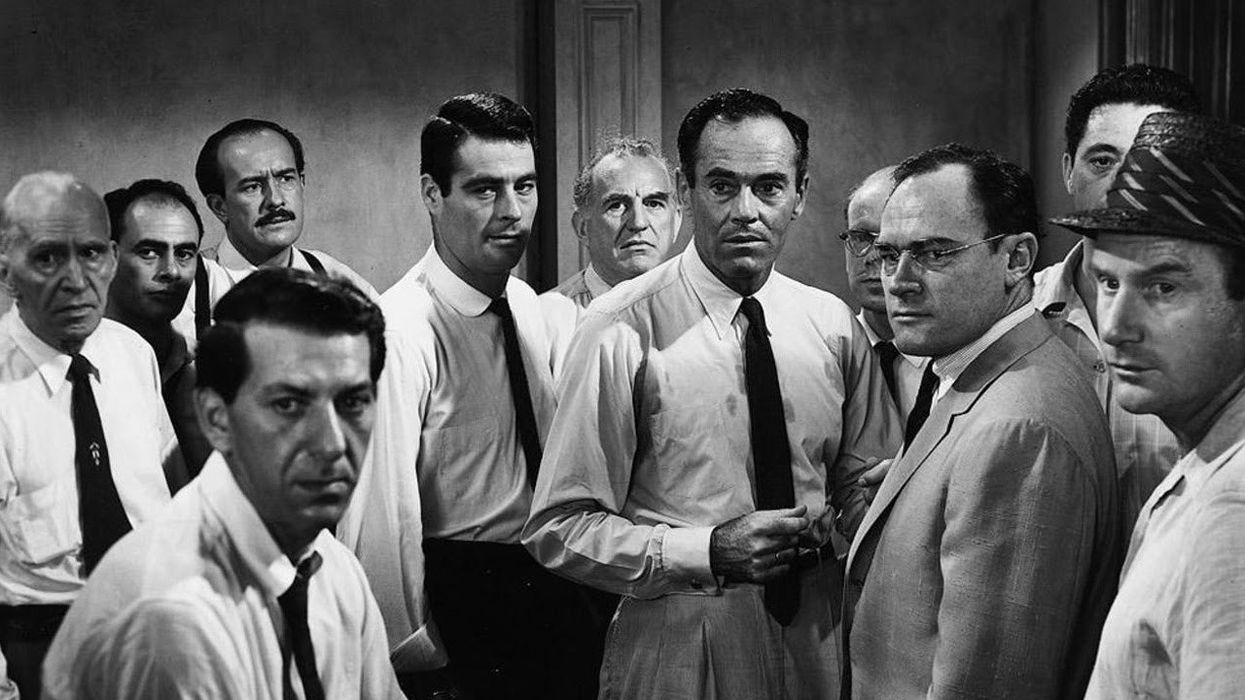Watch: '12 Angry Men' is a Masterclass in Blocking Your Movie
Never waste even a single iota of your frame.

Sidney Lumet's 1957 classic 12 Angry Men is a masterclass in blocking—and one that directors today should be able to learn from. Every scene is composed in a way that keeps the action moving and the audience engaged. This is in large part due to Lumet's integration of camera movement and actor staging. Pinpointed, pre-planned, and deftly executed, each frame is used to its maximum capability.
Andrew Saladino of The Royal Ocean Film Society breaks down the strategies Lumet employs to achieve this in the video essay below.
First and foremost, Saladino suggests freeing up your actors. "Modern directors sometimes limit dialogue to characters just standing or sitting and nothing else," he observes. When you get those actors on their feet, moving in the manner of their character, and physically interacting with their environment, it gives them an opportunity to explore and make discoveries that will most likely end up benefitting the film. This also keeps the scene energized—the audience will never feel as if the action is stagnant.
But don't just free up your actors; you should also free up your frame. This means taking in the whole picture and using every section of the frame as a place to set action or characters. Instead of simply keeping your character framed in the foreground, let them occupy more than one section of the screen, or even allow them to move all around the frame. In the same vein, you can have characters in different parts of your frame interact with each other. Allow conversations to play out between these characters occupying different spaces in the same shot (rather than with multiple).
"Story points can flow naturally out of the combined movement of the action and the camera."
In addition to intentionally staging your actors, you should also take into consideration how your camera will best function in highlighting the now varied elements of your frame composition. They should be working in tandem: you can trade off focus between characters, or you can start a shot with one character and then follow another instead. To progress a story with the camera, have characters simply move in and out of frame. Try using different types of framing within one shot.
All of these strategies will help to build your film's fluidity. Lumet creates what Saladino calls "density" within the scene, so that story points can flow naturally out of the combined movement of the action and the camera, rather than just the cutting.
Source: The Royal Ocean Film Society












